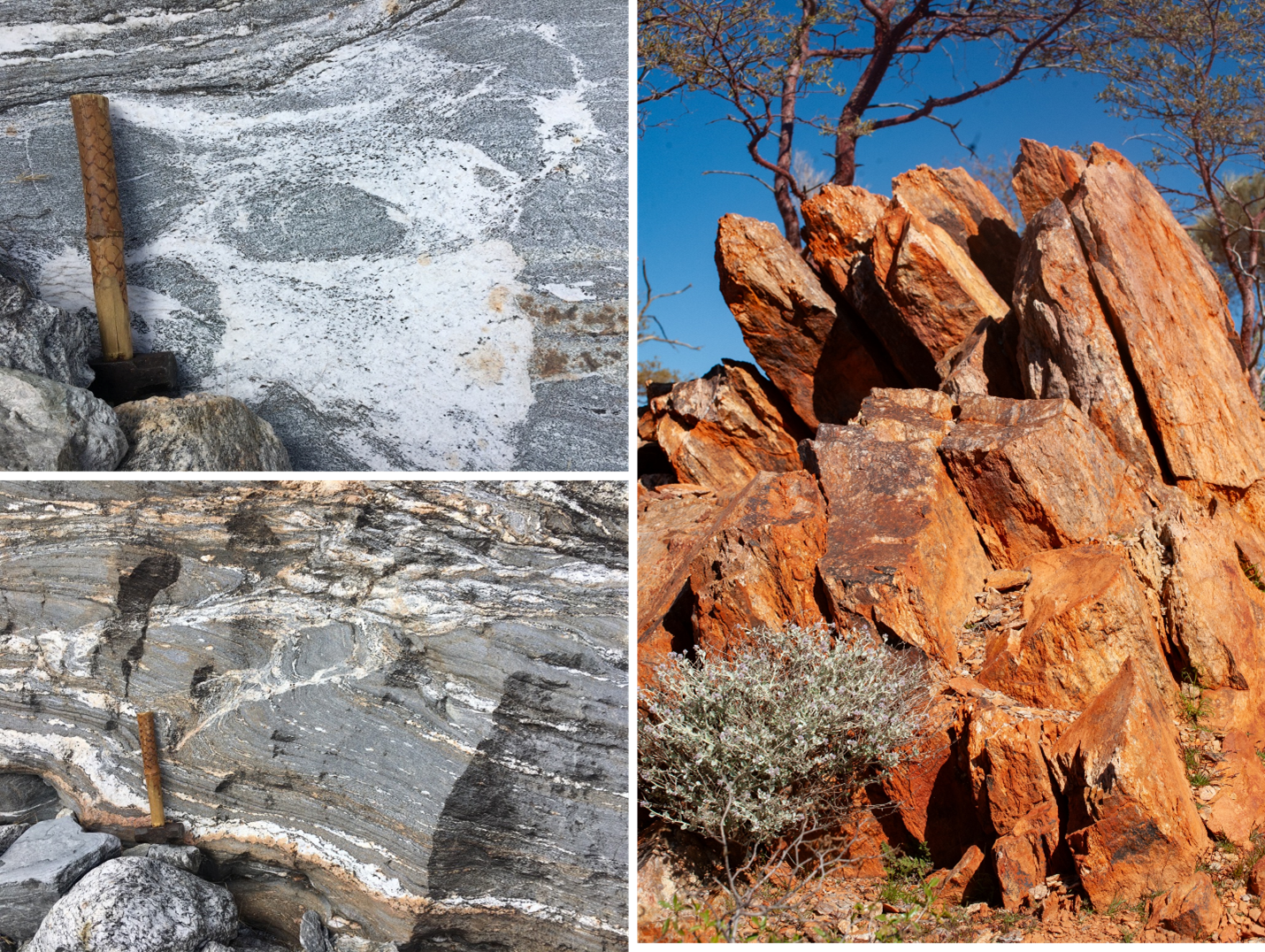Within the oldest crystals in the world, collected from Western Australia’s Jack Hills, lie the remnants of even older rocks – some of which were reprocessed through magma into the surviving crystals. With the help of machine learning, geologists have revealed that a third of these primeval rocks were sedimentary. This means that more than four billion years ago, at a time from which no minerals survive, the Earth had extensive crust exposed to the elements above sea level. The Earth’s first few hundred million years were not as strange to us as we might think.
The Earth’s atoms are mostly the same ones that were here more than four billion years ago, but nothing solid from that time survives; everything has been reprocessed, usually many times over. It’s one of the reasons we went to the Moon, and study asteroids, to find a direct line almost to the birth of the Solar System.
The lack of rocks that bear witness to the first ten percent of the Earth’s existence frustrates geologists. Yet in the oldest things on the Earth, arrivals from space aside, researchers have found an unexpected clue to that lost era, revealing how quickly the planet evolved to something familiar. It comes just a month after the same tiny crystals were used in a different way to prove something similar, but not quite as impressive.
The zircons of the Jack Hills are the Earth’s oldest surviving relics. They formed up to 4.4 billion years ago and subsequently became incorporated into sedimentary rocks that have since eroded away, leaving just the zircons behind.
The Jack Hills zircons crystallized from magma, but not the original magma ocean. This magma was made of older rocks drawn into the Earth to melt. Most information about those previous rocks has been lost in the magma reprocessing, but one fact geologists have hoped to find is whether any of them were sedimentary, or if these were all igneous.
Igneous rocks can form from cooling magma or lava we know existed on the early Earth, but sedimentary rocks require a water cycle, where rocks are exposed to the atmosphere above the water line. Rain erodes them, and the material is washed into lakes or oceans to settle and be converted into new forms of rock.
Professor Ross Mitchell of the Chinese Academy of Sciences and colleagues have taken a new look at Jack Hills zircons, as well as some from the newly discovered South African Green Sandstone Bed that may almost match their age. By training computers to recognize the fingerprints of sedimentary material within zircons, Mitchell and colleagues were able to determine that a sample of very old zircons contains about abundant S-type granite. This is granite formed from sediments that were subducted into magma.
The S-type share rises with time, as would be expected – but if the method Mitchell and colleagues used to identify S-type granites is right, zircons formed 4.24 billion years ago were made from 35 percent S-type granite. In an interesting tangent, the authors found that rather than rising forever, the S-type proportion rises and falls in line with cycles of supercontinent formation and collapse.

Magma melt incorporating sediment (“S-type” granite) from the Himalayas (left) and the discovery site of the Jack Hills zircon in Western Australia (right).
Image Credit: Ross Mitchell
To make an S-type granite, you need a previous process in which rocks form, erode to become sediments, and then are compressed to new rocks before being pushed down into magma. Such a multi-stage process is unlikely to be quick, so the original islands poking out of the sea must have been there considerably before the zircons’ formation. S-type granites in such ancient zircons would also prove tectonic cycles that subducted crust into the mantle occurred at least 4.2 billion years ago.
In other words, if an alien had visited the Earth early in its existence, they would have found neither a dry orange world, as presumed a few decades ago, nor an all-encompassing ocean, as suspected more recently.
The findings complement and extend work published in June, when a team investigating the ratio of oxygen isotopes within similarly aged zircons found most were formed within the ocean. However, some of the zircons show signs of having formed in fresh water on land that poked out of the ocean, indicating the presence of continental crust around this time.
The presence of S-type granites in Jack Hills zircons may have been a big debate among a small subset of geologists, but it has implications for a question attracting much wider interest. The two competing hypotheses for the origins of life are the warm little pond proposed by Darwin, and the hydrothermal vents at the bottom of the ocean.
However, the warm pond idea requires the planet to have had a water cycle with land and fresh water at the time life emerged. By pushing back the time when the first ponds existed, Mitchell and co-authors have not proved this was where life began, but they make a powerful case that ponds remain a contender.
The study is published in the Proceedings of the National Academy of Sciences.
Source Link: The World’s Oldest Crystals Contain Traces Of Even Older Sediments